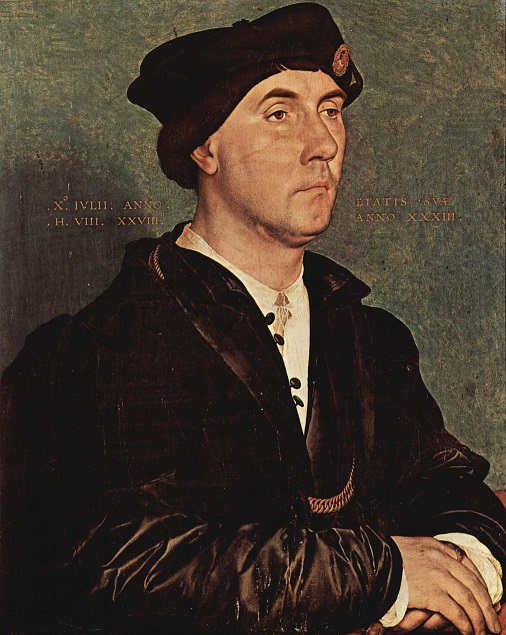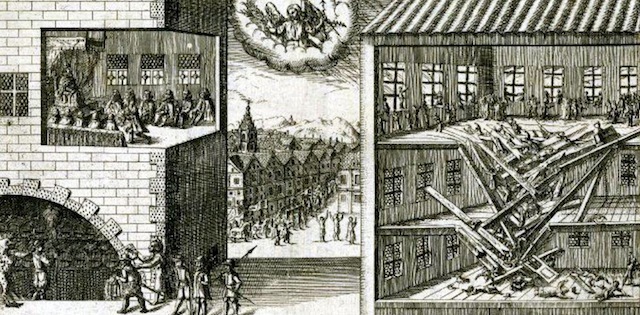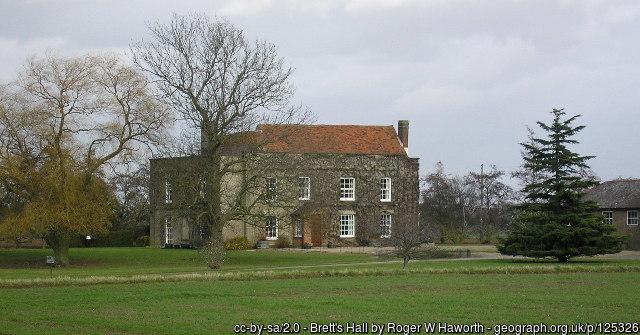
I first encountered the Drury family while transcribing the parish registers of Lawshall in Suffolk. There, I found out about Henry Drury of Lawshall Hall, a recusant Catholic who, in 1578, was thrown into prison by Elizabeth I – after she had first enjoyed Drury’s hospitality on her progress. Henry’s nephew, Ambrose Rokewode, was executed alongside Guy Fawkes for his role in the Gunpowder Plot.
William Drury ?-1589
A branch of the Drury family came to Tendring. William Drury, son of John Drury of Rougham, Suffolk, and Elizabeth Goldingham, was a lawyer, whose advice was sought by Elizabeth I. Drury was suspected of having Catholic views, and he converted to that faith on his deathbed in 1589. One of his sons, Robert (1587-1623), was a Jesuit, who had studied abroad on the Continent. He was killed at the Fatal Vespers in 1623, when he and another Jesuit were giving a sermon on the anniversary of the Gunpowder Plot and the floor collapsed, killing 95 people.[1]Read more about this forgotten, and tragic, disaster at The Londonist.

William Drury had married Mary, daughter of Sir Richard Southwell (1502-1564) of Woodrising in Norfolk, and they lived at Bretts Hall in Tendring. Sir Richard is an interesting man in his own right – he sat for Holbein for his portrait and was a courtier in the Tudor court, even supervising the executors of Henry VIII’s will. He was married twice, both to women from the Darcy family, and his mother’s maiden name had been Tendring, which might link him to the stepmother of Bridget Starling (Bridget was the mother of Sir Thomas Bowes and James Cardinall).
Sir John Drury (1573-1622) and Lady Anne Saunder (1576-1642)
Members of the Drury family begin to appear in Tendring’s parish register in 1610, with the children of Sir John Drury (1573-1619, knighted 1603) – eldest son of William and Mary Drury. Sir John’s wife, Ann, was the eldest daughter of Edmund Saunder, who has a memorial in the church of St Edmund in Tendring which is mentioned in Ann’s will. Her executor was to:
…bestowe tenne pounds to make and sett upp a monument in the Chancell at Tendringe for my eldest sonne John Drury Esquire whose body lyeth interred there. And likewise for my selfe who desire and hope to lye there by him by my owne father and three of my children and one of his lying there already.
As far as I can tell from photographs I’ve seen online (without being able to easily get to Tendring to check), the memorial only commemorates Edmund Saunder! Unless Edmund’s memorial went up when he died, and the one to John Drury junior has been lost. You can see a photograph of Edmund Saunder’s memorial here.
I don’t know where John and Ann were married. Their eldest child, John, was baptised in 1605 at St John’s, Clerkenwell.[2]John jnr was 16 in in 1622 at the time of the inquisition post mortem. Morant’s Essex says that Sir John died in 1619, but this must be wrong as Sir John’s will was written in December … Continue reading Their second son, Southwell, was baptised in Little Horkesley in 1607, a place the Drurys were linked with via the Jocelyn family. Then, in Tendring, came William in 1610, Robert in about 1612, Dorothy in 1617 (died 1618) and Edmund in 1618. By the time Ann wrote her will in 1642, three children had died and were buried in the chancel of Tendring St Edmund’s. Her eldest son, John, had died in 1640. Her second son, Southwell, had died in London in 1628, aged about 21. He was buried at the church of St Bartholomew the Great, the burial entry describing him as “servant to Thomas Joslyn gent” – the Joscelyns crossing the path of the Drurys once again.
Sir John died between Dec 1621 and February 1621/2, but he doesn’t appear in Tendring’s burial register, so must have been buried elsewhere – and one would assume he would have been buried with his children in the family grave inside St Edmund’s church if he had been buried in Tendring, which he apparently wasn’t.
Sir John left his eldest son John Bretts Hall and the Manor of Tendring Hall, a farm called Pestells and Hawke and copyhold in Weeley, as well as all his other property in Essex. If John had no lawful issue, then the properties were to pass to one of John and Ann’s other sons, by descending age – Southwell was the second son, William the third, Robert the fourth and Edmund the fifth. Sir John’s mother, Dame Mary Greysley,[3]After her husband’s death, she married Robert Forth, another lawyer, then she married Sir Thomas Gresley. The History of Parliament website says that Mary was in fact Sir Richard … Continue reading is mentioned in the will too as she had a life interest in Bretts Hall – £40 was to come out of the Hall yearly to pay for the bringing up of John’s four youngest sons. The rest and residue went to Sir John’s wife Dame Anne Drury, and Sir John’s brother-in-law, Thomas Josselyn, was supervisor.

Lady Anne Drury’s will
By the time Ann wrote her will in February 1641/2, she was a widow for a second time. She had married John Bowyer of St Osyth, who died between 1628 and 1630. His will makes for amusing reading as he mentions his crossbows, which he bequeathed to Earl River. He mentions his nephew Sir Richard Anderson in his will – this must be the son of Sir Henry Anderson, whose wife Elizabeth was a daughter of Francis Bowyer of London. Sir Richard inherited all of John Bowyer’s books and writings, except for two “virginal lessons” and some other books which belonged to Sir John Drury. Despite being John Bowyer’s widow, Ann was still known as Dame Ann Drury – this is her name on her will as well as in the burial register.
Her will is very interesting because we can see more relatives of hers in it, as well as the names of properties which crop up later which ended up with the Clarkson and Cardinall families. Ann wrote the will, she tells us on her 66th birthday, 17 February 1641/2. She left her son Robert copyhold in Weeley and, in Tendring, The Crowne and three small cottages which adjoined the church – I wouldn’t be surprised if those three cottages were between The Crown (which was a pub but is now a private house) and the church as it’s close by. He was her executor and received her rest and residue. Son Edmund Drury inherited farm implements and stock from the farm, as well as household goods such as a linen chest, and pewter.
She mentions some land and a house called “Buntes or Buntes Land in Tendring”, which she and her husband had copyhold of the Manor of New Hall in Tendring, and she appointed Edmund to have it. There is mention of her “cousin” Thomas St Laurence, an executor of Thomas Williamson. Williamson lived in Little Horkesley, and his will (proved 1639) mentions the Josselyns and also “my much honored good ladie and friend the Lady Anne Drury”, and her sons Robert and Edmund. Anne includes only two grandchild in her will: John and Anne Drury, the children of her late son, John. Bowyer relations are included in the will, and also her eldest brother Thomas Saunder, and some Saunder nieces and nephews. Her daughter-in-law Bridget – John’s widow – also appears in Ann’s will.
Whilst her son Robert was the executor, she appointed three supervisors: her cousin Harbottle Grimston, and her nephews Edmund Saunder, and Mr Thomas Bowyer, merchant and citizen of London. Her will also includes an inventory taken in 1640, which makes for fascinating reading as to just what a member of the gentry of the time would have owned. I’m not entirely sure how she was related to Harbottle Grimston, as the term “cousin” can be quite loose: Grimston was descended from the Rougham branch of the Drurys, but the link was a century or longer earlier. There may have been a more recent link, perhaps via Grimston’s wife. It’s certainly interesting that Ann should have been related to Grimston, as he and Sir Thomas Bowes are remembered now for their involvement as Justices of the Peace in the witch panic of the 1640s – and the Drurys were related to the Cardinalls, as was Sir Thomas Bowes, whose stepfather was Charles Cardinall.
Edmund Drury (1618-1669)
The youngest of Sir John and Anne’s children, Edmund was married twice, and had children, although there’s no record of his marriages or his baptisms. Clues however give us an indication, such as a burial in Tendring in 1648 of Mary, “wife of Edmund Drury, gent”, the mention of grandson in his will, and another wife called Alice.
In 1657, Edmund appeared as a witness at the Assizes in Chelmsford when two women broke into his house:[4]Essex Record Office
Mary Grimwood, widow, Margaret and Anne Grimwood, spinsters of Tendring there about 4 p.m. broke into the house of Edmund Drury and stole a diaper tablecloth worth 20s., six napkins worth 6s., a linen sheet worth 8s., a shirt worth 6s. and a smock worth 5s. belonging to the said Edmund, and two aprons worth 5s., a headdressing worth 2s. and a gorget worth 12d., belonging to Martha Turner spinster.
On 29 May 1669, Edmund Drury wrote his will. He was “sick of bodie”. He left his grandson John Blowers “one little gray mare” (I have been unable to trace John, but presumably a Drury bride married a Blowers groom somewhere), and the rest and residue of his estate to his wife Alice. He was buried three days later on 1 June 1669 in Tendring, as “Mr Edmund Drury”.
Alice wrote her will the day after Edmund’s burial. She mentions two daughters, but it’s not clear if they were also Edmund’s children. Her daughter Judith Partridge was bequeathed one gold ring, her granddaughter Rebecca Hacker was bequeathed Alice’s rest and residue, and Alice’s daughter Alice Hacker was the executor. There’s no probate date mentioned on her will, and apparently no burial for her in Tendring, and I haven’t been able to trace the legatees in her will, so I’m not entirely sure what became of her. One source, Stirnet, says that Alice was Alice Chapman of Great Bentley, but doesn’t say where the marriage took place. Great Bentley’s register is very damaged for the 1650s and 1660s so entries pertaining to Alice may have been irreparably lost.
Robert Drury (1612-1693) – and the Welby family again
I’m not sure what happened to William Drury, so after Edmund’s death in 1669, if William had already died, then the last surviving child of Sir John and Anne was Robert.
Robert had married Elizabeth Welby. Printed genealogies say that his wife was the daughter of “John Welby of London, merchant.” But I think this is a mistake and they in fact mean Richard Welby. Firstly, as far as I’m aware, there’s no John Welby who fits the bill. Secondly, Dorothy Welby (1606-1651), wife of James Cardinall and daughter of Richard Welby and Susan Rowe, had a sister called Elizabeth. I have not found her baptism, but she appears in Richard’s 1634 will, described as his youngest daughter. We know too that when Robert’s children were baptised in Tendring, their mother’s name was given as Elizabeth. When Robert mentions James Clarkson in his will – a grandson of James Cardinall and Dorothy Welby – he calls him his kinsman. If Robert’s wife was the daughter of Richard Welby, then James Clarkson would have been her great-nephew.
Robert and Elizabeth had six children baptised in Tendring, and none of them reached adulthood:
- Anne 1644- before 1652
- Elizabeth 1646-1655
- Robert 1647- before 1650
- Robert 1650-1660
- Anne 1652-1655
- Susannah 1654-1657
Robert wrote his will 1691. He asked to be buried in the churchyard at Tendring, near his wife at the chancel end. He left Susan Cardinall, widow the house she lived in at the time, and two closes called Flanders, and these were to descend after her death to her eldest son, John. Elizabeth, wife of Robert Sparling, was left two houses. William Starling was left a smithy and the house he occupied at the time, and John Browne, a fellmonger,[5]A dealer in hides or skins, especially sheepskin.) was left The Crown. Thomas “Jhoslin” of Little Horkesley was left copyhold in Weeley. He had sold Bretts Hall to Richard Bowes of Suffolk. I have mentioned elsewhere the slightly confusing mention of John Cardinall and an apprentice who lost their sight – it’s not entirely clear if it’s John himself who was the apprentice – but John was left £10 and Robert’s wearing apparel. John Cockerell, his wife and three children, were left 20 shillings each, and each of Robert’s menservants and maidservants were also left 20 shillings each.
Finally, he left his “kinsman” James Clarkson a large amount of property – the Manor of Tendring Hall, a farm called “Pestells and Baltons Land” and a grove belonging to it, as well as “Ould House Lands and Chesly Lands” and a meadow, woods, a grove, and a house with a barn. All of which Robert had bought from his late nephew, John. This must be John Drury who died in 1640 – he had, by his father’s will, written in December 1621, inherited Bretts Hall and the Manor of Tendring, a farm called Pestells, and Hawke, and copyhold in Weeley. James Clarkson was also left a house which abutted Tendring’s churchyard.
…with added Joscelyns
You’ll notice the appearance once more of a member of the Joscelyn family in connection with the Drurys. Why do they keep turning up? The answer is quite simple: Dorothy and Elizabeth Welby had a cousin called Susan, who married Thomas Joscelyn. Her father was William Welby, a knight of the Bath, and brother to Richard Welby, merchant – Dorothy and Elizabeth’s father.
Susan was born in Gedney, Lincolnshire, in about 1590. Her first husband, Thomas Locke, of Gray’s Inn, died in 1623. He had been married before – his first wife was Joyce, daughter of Cheyne Rowe. And yes, that’s the same Rowe family as Dorothy Welby’s mother and Sir Thomas Bowes’ first wife were from. Susan had two daughters by Thomas Locke, Frances and Susanna. In about 1630, Susan married Thomas Joscelyn, and their son, also called Thomas, was born in about 1631. It’s probably this son who is the Thomas Joscelyn mentioned in Robert Drury’s will. Thomas Williamson’s will mentions Thomas senior and Susan, as well as their son Thomas. And bear in mind too that when Southwell Drury, Robert’s brother died, he was Thomas Joscelyn’s servant. There were connections threading these families about for generations.
Footnotes
| ↑1 | Read more about this forgotten, and tragic, disaster at The Londonist. |
|---|---|
| ↑2 | John jnr was 16 in in 1622 at the time of the inquisition post mortem. Morant’s Essex says that Sir John died in 1619, but this must be wrong as Sir John’s will was written in December 1621 and proved in February 1621/2. The Inquisition PM at The National Archives is dated 24 March 1622 – 23 March 1623. If the age of John junior is correct in Morant, then the boy was 16 in 1622 or 1623 and this matches up fairly well with his baptism in 1605. |
| ↑3 | After her husband’s death, she married Robert Forth, another lawyer, then she married Sir Thomas Gresley. The History of Parliament website says that Mary was in fact Sir Richard Southwell’s illegitimate child, and she had also been married to Henry Paston. |
| ↑4 | Essex Record Office |
| ↑5 | A dealer in hides or skins, especially sheepskin. |
